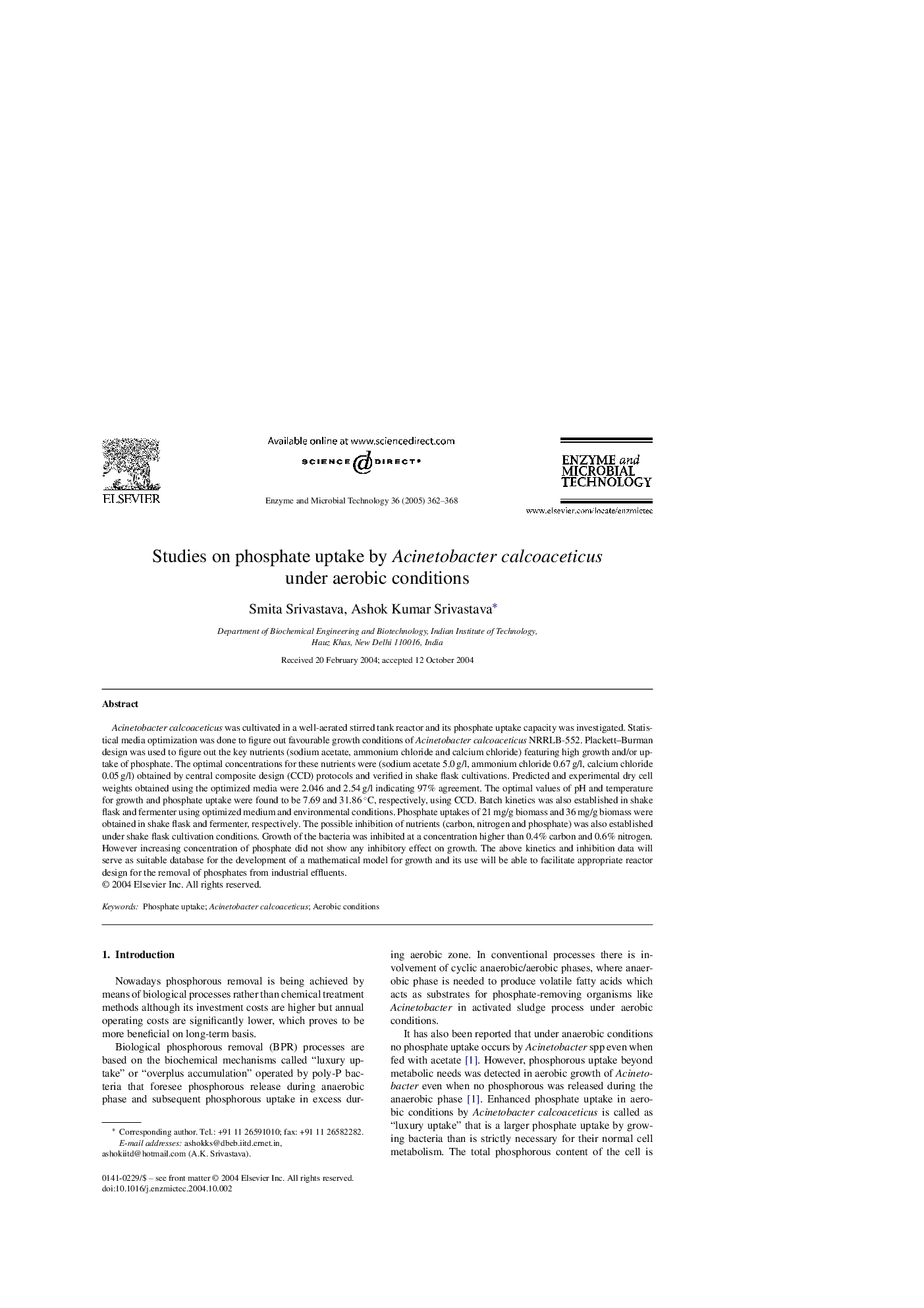| Article ID | Journal | Published Year | Pages | File Type |
|---|---|---|---|---|
| 9602697 | Enzyme and Microbial Technology | 2005 | 7 Pages |
Abstract
Acinetobacter calcoaceticus was cultivated in a well-aerated stirred tank reactor and its phosphate uptake capacity was investigated. Statistical media optimization was done to figure out favourable growth conditions of Acinetobacter calcoaceticus NRRLB-552. Plackett-Burman design was used to figure out the key nutrients (sodium acetate, ammonium chloride and calcium chloride) featuring high growth and/or uptake of phosphate. The optimal concentrations for these nutrients were (sodium acetate 5.0 g/l, ammonium chloride 0.67 g/l, calcium chloride 0.05 g/l) obtained by central composite design (CCD) protocols and verified in shake flask cultivations. Predicted and experimental dry cell weights obtained using the optimized media were 2.046 and 2.54 g/l indicating 97% agreement. The optimal values of pH and temperature for growth and phosphate uptake were found to be 7.69 and 31.86 °C, respectively, using CCD. Batch kinetics was also established in shake flask and fermenter using optimized medium and environmental conditions. Phosphate uptakes of 21 mg/g biomass and 36 mg/g biomass were obtained in shake flask and fermenter, respectively. The possible inhibition of nutrients (carbon, nitrogen and phosphate) was also established under shake flask cultivation conditions. Growth of the bacteria was inhibited at a concentration higher than 0.4% carbon and 0.6% nitrogen. However increasing concentration of phosphate did not show any inhibitory effect on growth. The above kinetics and inhibition data will serve as suitable database for the development of a mathematical model for growth and its use will be able to facilitate appropriate reactor design for the removal of phosphates from industrial effluents.
Related Topics
Physical Sciences and Engineering
Chemical Engineering
Bioengineering
Authors
Smita Srivastava, Ashok Kumar Srivastava,
